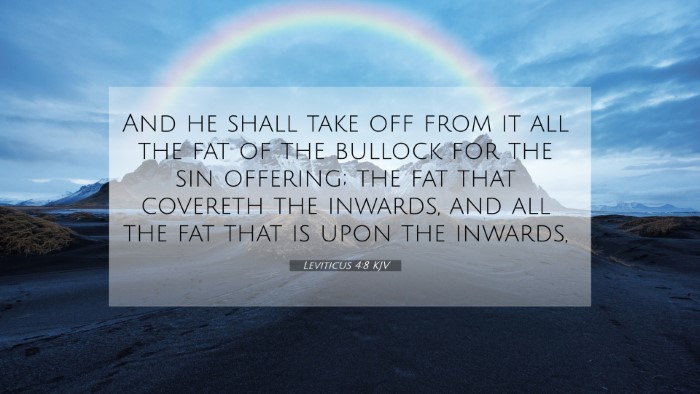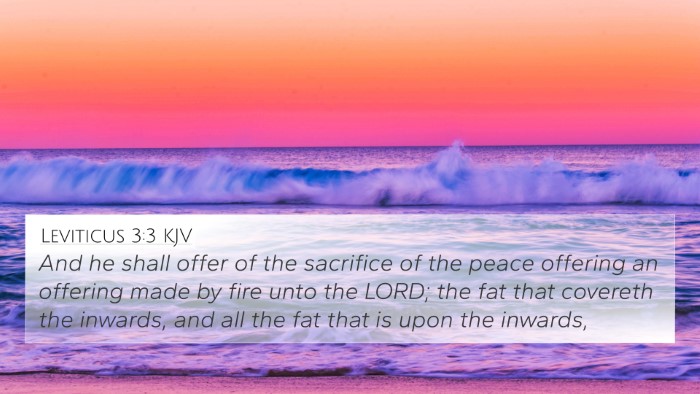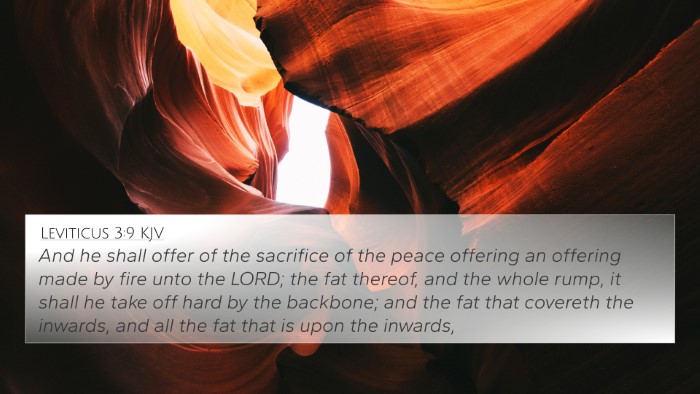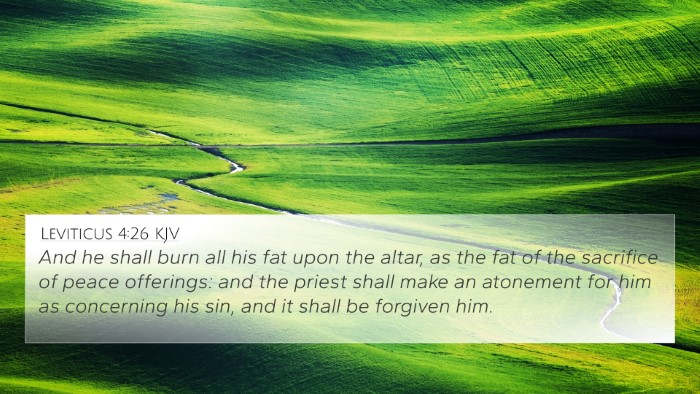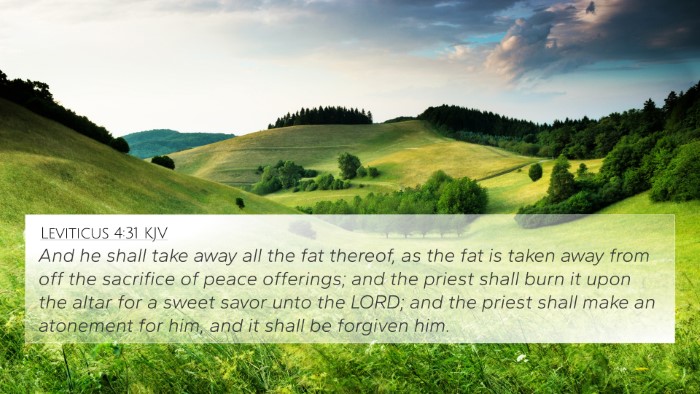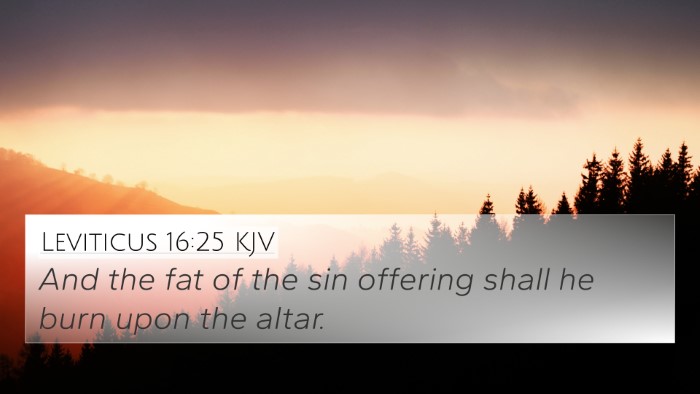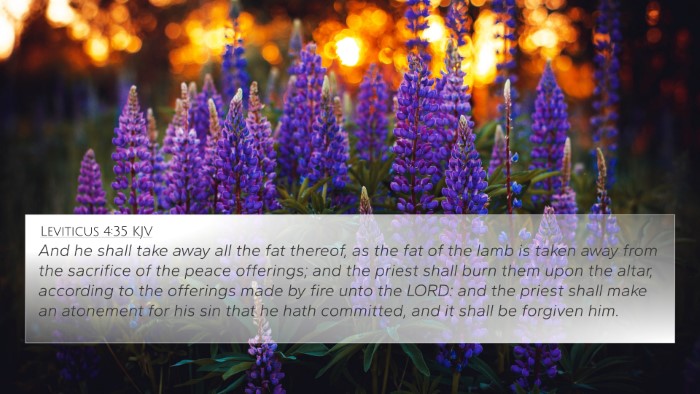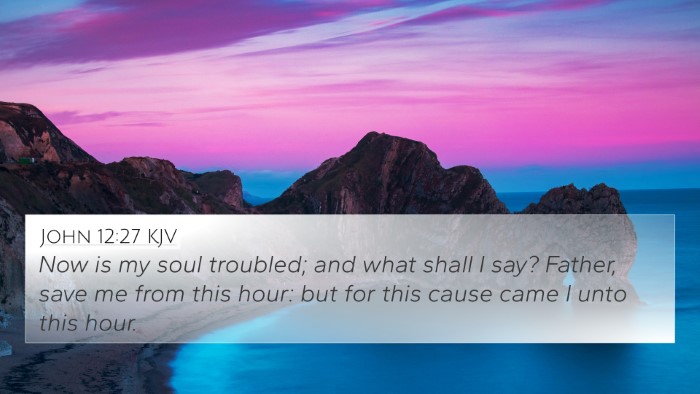Understanding Leviticus 4:8
Leviticus 4:8 reads: "And the priest shall take of the blood of the sin offering with his finger, and put it upon the horns of the altar of burnt offering, and shall pour out the blood at the bottom of the altar of burnt offering."
Summary of the Verse
This verse details a specific procedure that the priest must follow in conducting a sin offering. The actions described reflect the meticulous nature of the sacrificial system in ancient Israel, which underscores the seriousness of sin and the need for atonement.
Commentary Insights
-
Matthew Henry:
Henry emphasizes the importance of the ceremonial law, portraying the procedures as deeply symbolic. He notes that the act of taking blood and applying it to the altar signifies the transfer of sin and the necessity of blood for atonement. This serves to remind the people of the costliness of sin and the grace available through sacrifice.
-
Albert Barnes:
Barnes highlights that the horns of the altar represent a place of refuge and mercy. The application of blood symbolizes divine acceptance and the ratification of a covenant between God and His people. The poured-out blood at the base signifies the offering's completion and the serious consequences of sin that the sacrifice addresses.
-
Adam Clarke:
Clarke discusses the overall symbolism of the blood in the context of atonement and redemption. He details the necessity of a mediator, as the priest functions as an intermediary between God and the sinner. Clarke also draws parallels with the New Testament, where Christ’s sacrifice fulfills the requirements established in the Levitical laws.
Bible Verse Cross-References
Understanding Leviticus 4:8 can be enhanced by examining its cross-references, which illustrate the interconnectedness of biblical texts. Here are important verses to consider:
- Exodus 29:12: Details the importance of blood in the consecration of the altar.
- Leviticus 16:15: Discusses the sin offering on the Day of Atonement, illustrating the necessity of atonement for the people.
- Hebrews 9:22: Reflects on the significance of blood in the context of forgiveness, stating that without the shedding of blood there is no remission of sins.
- 1 Peter 1:19: Highlights the preciousness of Christ's blood as a lamb without blemish, drawing parallels to the sacrificial system.
- Romans 3:25: Speaks of Jesus as a propitiation through faith in His blood, linking to the concept of atonement found in Leviticus.
- Luke 22:20: Jesus refers to the new covenant in His blood, establishing the connection between the Old Testament sacrifices and His ultimate sacrifice.
- Isaiah 53:5: Prophetic passage that foreshadows the suffering servant, emphasizing the redemptive power of sacrifice.
Thematic Bible Verse Connections
Leviticus 4:8 invites readers to explore major theological themes found in the Bible:
- Atonement: The necessity of blood sacrifice for the forgiveness of sins.
- Redemption: The broader narrative of God's plan to redeem His people through sacrifice.
- Intercession: The role of priests in mediating between God and humanity, pointing to Christ as the ultimate High Priest.
Inter-Biblical Dialogue
The dialogue between the Old and New Testament reveals rich layers of meaning in Leviticus 4:8. The strict procedures outlining sacrifices for sin establish a framework that finds its ultimate fulfillment in the New Testament.
For instance, the sacrificial system illustrated in Leviticus speaks to the profound need for atonement and sets the stage for a deeper understanding of such sacrifices through the coming of Christ, who is referred to as the Lamb of God (John 1:29).
FAQ: Finding Cross-References in the Bible
For those exploring how to navigate the rich intertextuality of the Scriptures, utilizing tools for Bible cross-referencing such as concordances or cross-reference guides can be instrumental. Here are some tips:
- Utilize a Bible concordance to help identify words and themes.
- Look for passages that contain similar themes, words, or contexts.
- Consider online Bible cross-reference systems that can help draw parallels across scripture.
Conclusion
Leviticus 4:8 is a vital component of the biblical narrative on sacrifice and atonement. By examining this verse deeply through the insights from public domain commentaries and through cross-referencing with related scriptures, believers can gain a fuller understanding of God's intentions for redemption throughout history.
Furthermore, exploring the connections between Bible verses fosters a stronger grasp of God's overarching narrative and can enhance personal study and sermon preparation.


